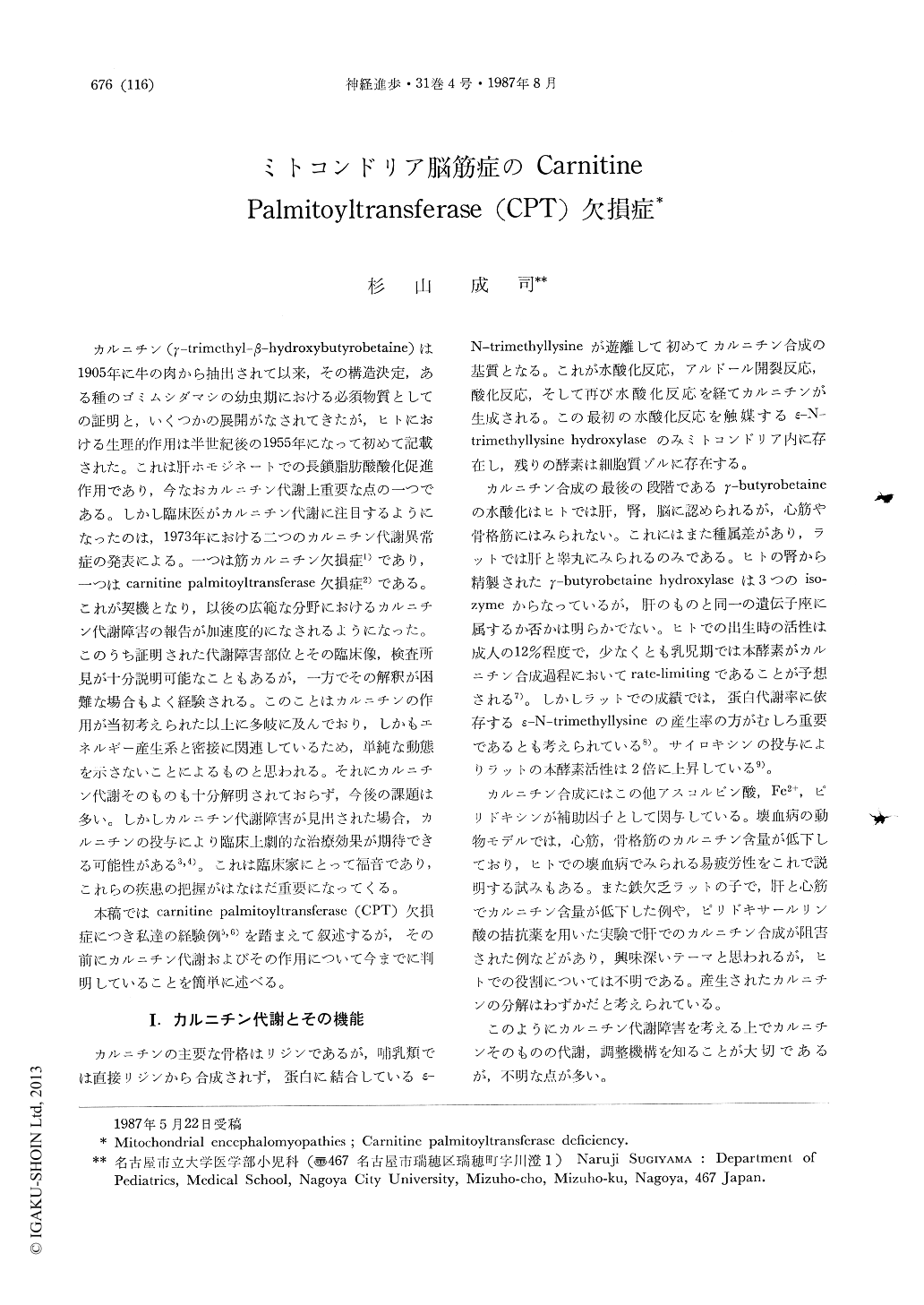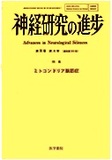Japanese
English
- 有料閲覧
- Abstract 文献概要
- 1ページ目 Look Inside
カルニチン(γ-trimethyl-β-hydroxybutyrobetaine)は1905年に牛の肉から抽出されて以来,その構造決定,ある種のゴミムシダマシの幼虫期における必須物質としての証明と,いくつかの展開がなされてきたが,ヒトにおける生理的作用は半世紀後の1955年になって初めて記載された。これは肝ホモジネートでの長鎖脂肪酸酸化促進作用であり,今なおカルニチン代謝上重要な点の一つである。しかし臨床医がカルニチン代謝に注目するようになったのは,1973年における二つのカルニチン代謝異常症の発表による。一つは筋カルニチン欠損症1)であり,一つはcarnitine palmitoyltransferase欠損症2)である。これが契機となり,以後の広範な分野におけるカルニチン代謝障害の報告が加速度的になされるようになった。このうち証明された代謝障害部位とその臨床像,検査所見が十分説明可能なこともあるが,一方でその解釈が困難な場合もよく経験される。このことはカルニチンの作用が当初考えられた以上に多岐に及んでおり,しかもエネルギー産生系と密接に関連しているため,単純な動態を示さないことによるものと思われる。それにカルニチン代謝そのものも十分解明されておらず,今後の課題は多い。
The clinical manifestations of carnitine palmitoyltransferase (CPT) deficiency are characteristic recurrent myoglobinuria with myalgia, muscle stiffness and marked elevation of muscle enzymes in the blood, induced by fasting, prolonged exercise and/or coldness. These mechanisms have been explained as that CPT is essential for mitochondrial oxidation of long-chain fatty acids, so therefore it is impossible for a patient with CPT deficiency to utilize lipids as fuel in skeletal muscle under such conditions, following energy deprivation.

Copyright © 1987, Igaku-Shoin Ltd. All rights reserved.


